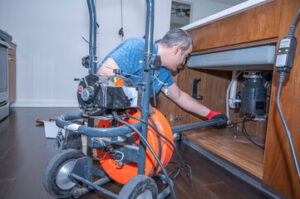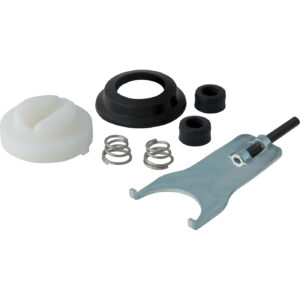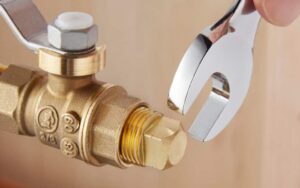Finding the perfect home can be an overwhelming process. Home Inspection Colorado Springs Co helps buyers make a well-informed decision by thoroughly inspecting the property.
To help the inspection process run smoothly, buyers should prepare for it beforehand. This includes removing trash and clutter from areas that will be inspected, such as the basement or crawl space.

During a home inspection, the inspector will identify issues that need to be fixed. These issues can be major or minor. Buyers may negotiate with the seller to either make the necessary repairs or to compensate them for the cost of those repairs. Working with an experienced New Jersey real estate attorney can help buyers understand the impact of these issues and determine what to prioritize in their negotiations.
For example, if significant defects compromise the structural integrity of a home, those problems must be resolved before the sale can be finalized. If the cost of addressing these defects is within a buyer’s budget or financing capabilities, it may be best to walk away from the deal.
Buyers need to be reasonable when negotiating with sellers. While a buyer may request that the seller repair certain issues, they shouldn’t threaten to terminate the purchase if the requests aren’t met. In Steinhausen’s experience, most homeowners are willing to assist, whether for actual repairs or a credit toward closing costs.
Home inspectors look for any wiring issues and note any that need to be replaced or upgraded. Faulty wiring is not only an inconvenience, but it can also be a fire hazard.
Older homes may have electrical panels and breakers that need help to handle the load of modern appliances. Upgrading them will not only improve safety but also make sure everything is properly grounded to prevent electrical accidents.
A good home inspector will take the time to discuss any findings with a buyer and explain them in a way that is easy to understand. They can help the buyer decide what to do next, such as request a price decrease or credit on the purchase or ask the seller to make repairs. Having these details before moving in can save serious problems and expenses. In addition, they can give a buyer confidence that they’re making the right decision. A home inspection will turn up the structural and safety problems that might not be visible to a prospective buyer, which can make or break the deal.
A home inspector will examine the plumbing system to ensure that safe water can flow into the house and waste can exit. They will also look for any signs of leaks and inspect the water heater to see if it is functioning properly.
Many real estate professionals recommend choosing a home inspector who is licensed and a member of ASHI or NAHI. This will help ensure that they are knowledgeable about the inspection process and can answer any questions you may have. They can also provide you with recommendations if needed.
If you are still deciding which home inspector to choose, ask your friends and family for recommendations. If they have gone through the home-buying process recently, they can give you a recommendation they trust.
It is a good idea to attend the inspection yourself to observe the inspector and ask questions. This is especially important if the offer you are making on the property is contingent on the results of the home inspection.
A home inspector will examine the heating, ventilation, and air conditioning (HVAC) system and look for problems such as leaks, poor repair jobs, sagging beams or roofs, and a lack of proper insulation. They will also test ductwork for aging and efficiency.
The inspection will not reveal everything that might go wrong with a house, but it should give potential buyers a solid understanding of the property they’re about to purchase. It can point to significant repairs, possible oversights by the builder, or general maintenance required to keep the property in good condition.
Some home inspectors offer ancillary services, such as testing for mold, asbestos, and radon. Some states allow this, while others do not. In addition, some inspectors offer warranties for their work. These are typically 90-day limited warranties but may not cover water damage, mechanical failure, or insect infestation. Ask prospective inspectors about their policies and fees.
A home inspector will look for areas that could cause water to enter the house, such as missing or damaged shingles and cracked or loose mastic around vents. They’ll also check gutters and roof drains. The inspector may even walk on the roof to look at flashing, ventilation, and leaks.
The inspector will also look at the chimney, furnace vents, and fireplaces, as well as the foundation and basement. In addition, they’ll examine the interior walls and ceilings for cracks and signs of moisture damage.
It’s important to separate what needs to be fixed from what can wait. The inspector should point out any issues that need to be addressed immediately, such as electrical problems and unsafe conditions.
A good home inspector will help you understand what needs to be fixed so you can make a wise decision about how you want to proceed with the purchase. Buyers can often request credits from sellers for certain repairs. However, if the repairs are so extensive that they’re causing the property’s value to decline, it might be wise to walk away from the deal.
Home inspectors look for cracks, moisture, and window/door problems that could indicate foundation issues. This is one of the most serious problems that a home inspection can turn up, and it can mean that the house is no longer affordable.
You can ask the seller to make repairs, or you can walk away from the sale altogether. But remember that you’ll also need to restart the mortgage approval process if you do so. So, think carefully before you agree to a deal dependent on a satisfactory home inspection.
If you have any doubts, get the inspection done as early as possible in the buying process so that you can decide how to proceed. A good time to do this would be after the sellers accept your offer but before closing. This will allow the inspector enough time to complete the inspection and provide you with their report before the final closing date. This gives you more negotiating power and ensures that all parties know of any potential problems before moving forward.
Home inspectors look for signs of water problems, such as standing puddles and faulty grading, the condition of walkways, stairs, and railings, and the type and condition of gutters and downspouts. They also check the roof, including shingles, flashing, and chimneys. They may test for radon and wood-destroying organisms.
A home inspection is not a substitute for a home appraisal, which is required and scheduled by a lender to determine the property’s value. A home inspection is designed to educate a buyer about the property and to help them make an informed purchase decision.
A homebuyer does not have to be present during the inspection, but it is often recommended. By attending the inspection, a potential buyer can learn about the property from the inspector’s point of view and ask questions directly. The inspector will also note any areas that may need repair or improvement, which can be helpful when negotiating with a seller. A homebuyer who waives a home inspection may find themself in a situation later that requires expensive repairs that could have been avoided.
In addition to checking the home’s general condition, a qualified inspector will look at its interior. This includes examining any electrical wiring, checking the condition of light fixtures and switches, assessing whether or not the electrical outlets are grounded (protecting you against fire hazards), and looking at plumbing fixtures and leaks.
The inspector may even open the electrical panel covers and inspect the inside of the furnace, water heater, and boiler. They will examine the walls, floors, ceilings, and doors for any signs of damage. They may also test the water pressure, run a few tests for radon, and check for termite infestation and wood-destroying organisms.
It is a good idea for the buyer to be present during the inspection, and many inspectors recommend it. This will give the buyer a chance to interact with the inspector and ask questions as they go along. It will also help the inspector to explain any findings and provide recommendations. A home inspection can reveal several problems that could prove costly, even for new construction homes.


